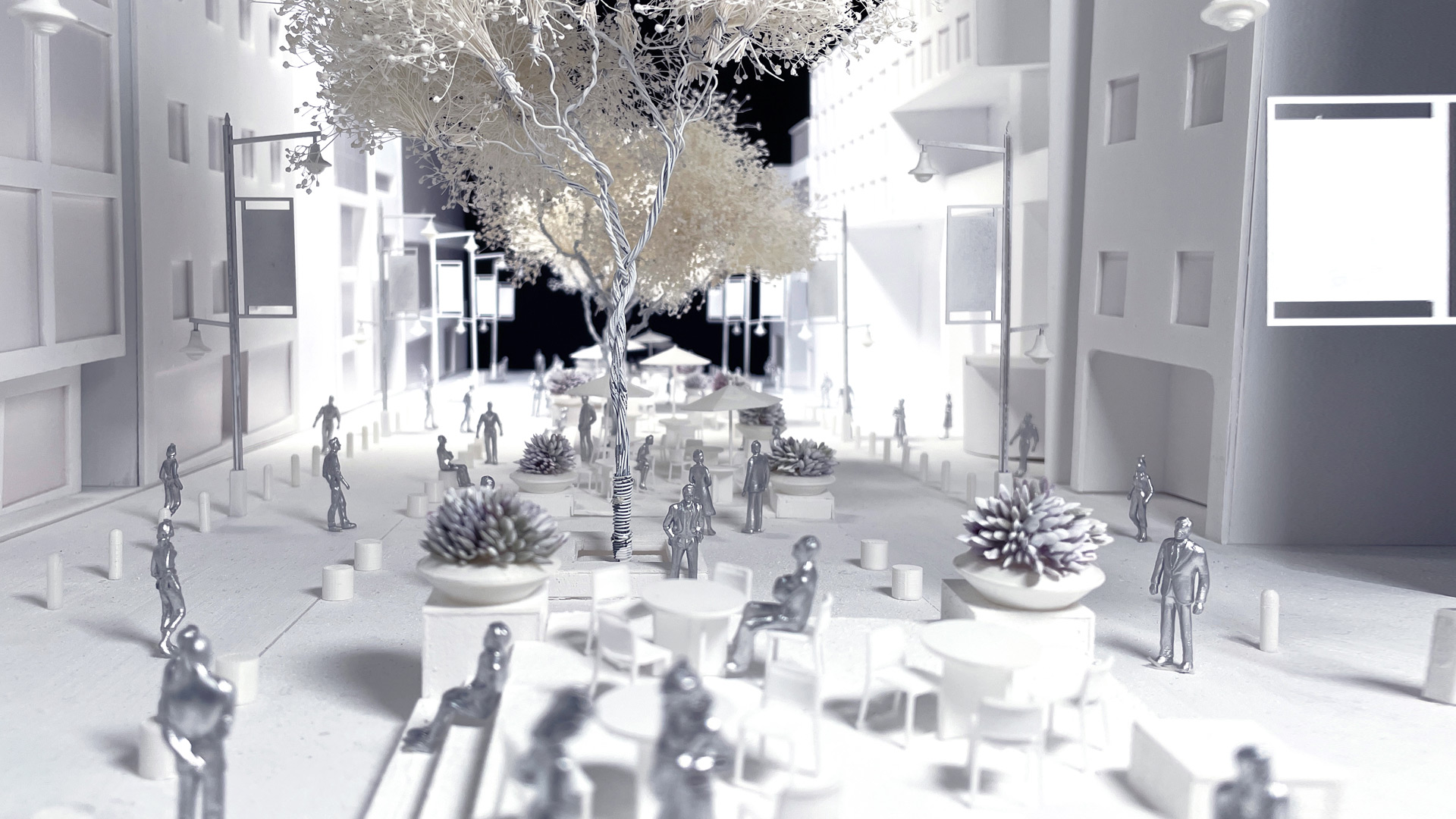Who owns the road?
Kenkenpa, rubber jump rope, menko, marbles.
In the past, in "Michi" and "vacant lots", there was a view of "everyday life" with human beings as the leading role, along with the eyes of adults watching children play. However, with the progress of economic development and motorization, measures to prioritize the development of road networks for vehicles continued for a long time.
In Shibuya Ward
On the other hand, in the local governments at the end, aiming for the coexistence of pedestrians, a method of community roads that suppress the speed of cars was tried, and several walking route routes were developed in Shibuya Ward. After that, on Koen-dori, Inoue-dori, Harajuku-ekimae-dori, and Sakurazaka, the number of lanes was reduced and the sidewalk was widened by narrowing the roadway. As a result, the walking environment has been improved and human-centered two-sided town development is being promoted.
Future roads and public spaces
In recent years, efforts to restore the road space occupied by cars to humans have been promoted in the world's advanced cities with the keywords of environment, economy, health, human connection, and creation of local culture. Janette Sadik-Khan's book "Street Fight", which was also talked about when Times Square in New York was returned to the pedestrian space, was finally released in Japanese last year. When I came to Japan, I walked around the town with Mayor Hasebe, exchanged opinions, and accompanied Future Design Shibuya (FDS).
New Normal questioned by Corona
In the current Corona disaster, the importance of open spaces such as roads and parks has been refocused in the pursuit of social distance and safety. In Japan as well, the use of roads on the terraces of restaurants for a limited time is permitted as a measure against corona, and after that, the Ministry of Land, Infrastructure, Transport and Tourism is urging the full-scale shift to the "Hokomichi" system that incorporates not only transportation functions but also retention and exchange functions. increase.
In addition, the Ministry of Land, Infrastructure, Transport and Tourism is promoting "machinaka walkable", which is expected to innovate and create third places by promoting the formation of exchange and stay spaces in collaboration with the public and private sectors. Shibuya Ward has also named itself as a walkable promotion city with the aim of creating a city that makes people feel comfortable and want to walk.
In the future, if the "machinaka walkable area" is positioned in the urban renewal development plan based on the Act on Special Measures for Urban Renewal, the development of pedestrian accommodation space will be supported by subsidies, and private businesses will open the private land area. And glass-walled low-rise buildings can be supported by subsidies and reduction measures for property tax and city planning tax.
FDS Initiatives
Against this background, as a research project, FDS aims to create a system in which local businesses and street culture are involved in the utilization of public spaces, and to expand business opportunities for local residents and companies. So far, through joint research with the Meiji University Architecture and Urban Design (Hiroyuki Sasaki) laboratory, we have researched roads on a scale of large, medium and small, and have mainly advanced the following four points.
・ Announcement of public space vision ver.1.0 (interim report) around Shibuya Station
・ Implemented a volasite and conducted a survey at Miyamasuzaka regarding the special road occupancy of the corona.
・ At the SIW talk session, exchange opinions with the government, local shopping districts, universities, and experts on the future of public spaces.
・ Proposal of future streetscape "Shibuya Gateway Terrace" in Miyamasu-zaka
Currently, we are considering how to reorganize and utilize the streets centered on people, focusing mainly on Miyamasu-zaka, which is being considered for redevelopment by Shibuya Ward.
If you write your enthusiasm in the future without fear of misunderstanding, in order to utilize variable public spaces that meet the needs of the times, while valuing each location, we will expand activities by strengthening cooperation between roads and roadside facilities. We are exploring the need to develop a model that will generate money on the road and return it to road maintenance, maintenance, and improvement of regional value. The spatial composition of a road should be designed as a set with who does what in that space. It is necessary for various players to participate and try in order to share the future image of the town and the direction of the efforts with the local people and to surely proceed with what they want to do. For this reason, we believe that new initiatives for road utilization should be started as experiments even before the legal system is fully developed.
With Shibuya as the world's forefront experimental city, we would like to open up possibilities with various approaches together with companies and local people, so we look forward to your participation in public space utilization research.
※reference
Public space vision around Shibuya station ver.1.0 (interim report)
Public Space Vision Ver.1.0 around Shibuya Station | Interim Report –Future Design Shibuya (fds.or.jp)
Street Design Guidelines Ministry of Land, Infrastructure, Transport and Tourism website
Street / Coalition / New Transportation: Street Design Guidelines-Ministry of Land, Infrastructure, Transport and Tourism (mlit.go.jp)



